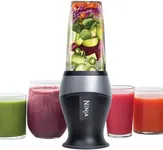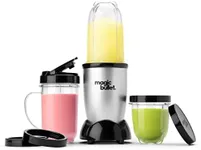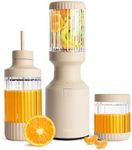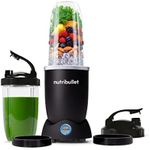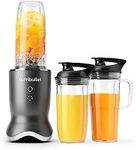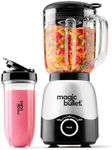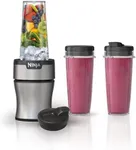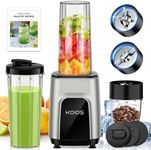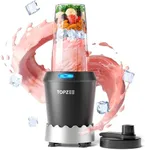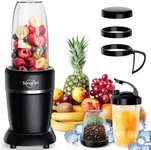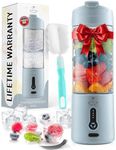Buying Guide for the Best Mini Blenders
Choosing the right mini-blender can make a big difference in your daily routine, whether you're making smoothies, sauces, or baby food. The key is to understand what features are most important for your needs and how to evaluate them. Here are some key specifications to consider when selecting a mini-blender, along with explanations to help you make an informed decision.Power (Wattage)Power, measured in watts, determines how effectively a mini-blender can blend ingredients. Higher wattage means more powerful blending, which is important for handling tougher ingredients like ice, nuts, and fibrous vegetables. Mini-blenders typically range from 200 to 1000 watts. For simple tasks like blending soft fruits or making dressings, a lower wattage (200-400 watts) is sufficient. For more demanding tasks like crushing ice or making nut butter, look for a higher wattage (600-1000 watts). Consider your typical usage to decide the right power level for you.
CapacityCapacity refers to the volume of the blending container, usually measured in ounces or milliliters. Mini-blenders generally have smaller capacities, ranging from 8 to 32 ounces. If you plan to make single servings or small batches, a smaller capacity (8-16 ounces) will be adequate and more convenient. For larger servings or if you want to blend multiple servings at once, opt for a larger capacity (20-32 ounces). Think about how much you typically blend at one time to choose the right capacity.
Blade Material and DesignThe blades are crucial for effective blending. Most mini-blenders use stainless steel blades, which are durable and resistant to rust. The design of the blades can also affect performance; some are better suited for blending liquids, while others can handle tougher ingredients. Look for multi-pronged blades if you need versatility. If you primarily blend soft ingredients, a simpler blade design will suffice. Consider what you blend most often to determine the best blade material and design for your needs.
Speed SettingsSpeed settings allow you to control the blending process. Some mini-blenders have a single speed, while others offer multiple speeds or pulse functions. Multiple speed settings provide more control and versatility, allowing you to blend different ingredients to the desired consistency. If you only need a blender for basic tasks, a single speed may be enough. For more complex recipes or varied textures, look for a mini-blender with multiple speed options. Think about the types of recipes you make to decide on the necessary speed settings.
Portability and DesignPortability and design are important if you plan to use your mini-blender on the go or have limited kitchen space. Some mini-blenders are designed to be compact and lightweight, making them easy to carry and store. Others come with travel lids or cups that double as blending containers. If you need a blender for travel or small kitchens, prioritize compact and portable designs. Consider how and where you will use the blender to choose the right design features.
Ease of CleaningEase of cleaning is a key factor for convenience. Some mini-blenders have dishwasher-safe parts, while others require hand washing. Blenders with removable blades and simple designs are generally easier to clean. If you want to minimize cleanup time, look for models with dishwasher-safe components or easy-to-clean designs. Think about how much time you want to spend on cleaning when selecting a mini-blender.
